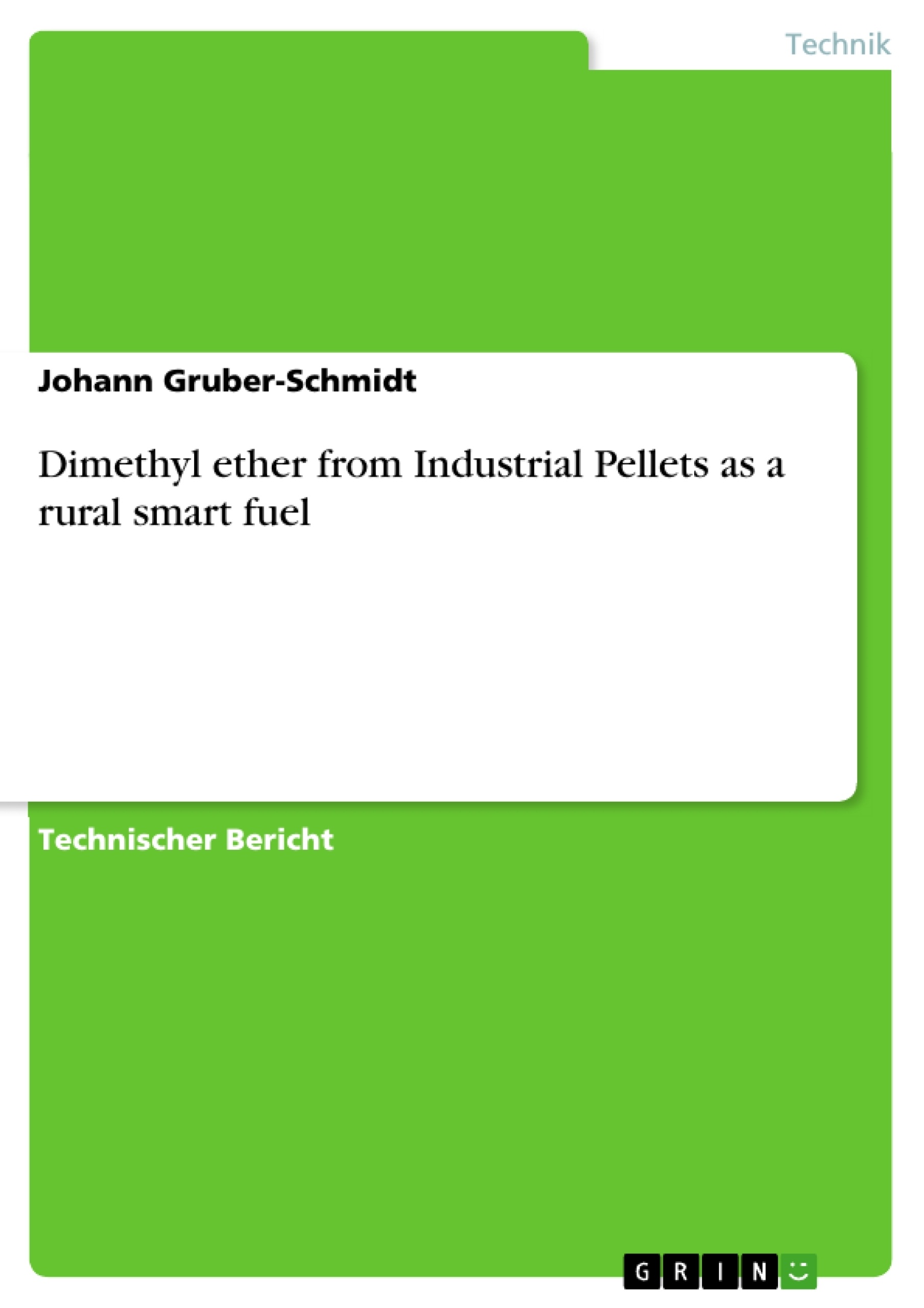Wood Pellets are well known and a part of the global trading. But the main problems are the high costs, the energy needed, the high quality of wood, leads to a product, without any industrial application. For industrial application we need larger pellets up to 25 mm diameter and higher, with a very low ash production, with low limits in pollution like metals and organic compounds. Those industrial pellets can substitute fossil coal, and fossil crude oil. Beside the application of industrial pellets we are now in the position to recycle municipal waste and to produce pellets as secondary fuel or pellets as refused fuel. The classical pellets can be used in combustion chambers with attached boilers, this technology is well known. The industrial pellets can be used in gasifiers to produce a weak gas and charcoal. secondary fuel and RDF pellets can be used in advanced gasifiers to generate weak gas and charcoal. Again we have to recycle and separate the wood and waste wood and municipal waste into metals, plastics and biogenic waste. The biogenic waste has to be separated into used natural wood, used coated wood, in biogenic waste and in biogenic waste with plastic foils. Metals and plastics will be recycled in the industrial processes. With the separation and recycling process we now in the position to qualify the wood waste and to generate weak gas and charcoal or to generate a strong syngas for dimethyl ether production.
Inhaltsverzeichnis
- Introduction
- Biomass and Waste
- Dimethyl ether
- Industrial Pellets
Zielsetzung und Themenschwerpunkte
Diese Arbeit befasst sich mit der Herstellung von Dimethylether (DME) aus industriellen Pellets, die aus Holzabfällen und anderen Biomassequellen gewonnen werden. Das Ziel ist es, eine nachhaltige und effiziente Methode zur Energiegewinnung zu entwickeln, die auf erneuerbaren Ressourcen basiert und den Einsatz fossiler Brennstoffe reduziert.
- Herstellung von Dimethylether (DME) aus industriellen Pellets
- Recycling von Holzabfällen und Biomasse
- Entwicklung einer nachhaltigen Energiequelle
- Reduktion des Einsatzes fossiler Brennstoffe
- Untersuchung der Eigenschaften und Verwendungsmöglichkeiten von industriellen Pellets
Zusammenfassung der Kapitel
Introduction
Die Einleitung führt in die Thematik der industriellen Pellets und ihrer Bedeutung als Alternative zu fossilen Brennstoffen ein. Sie beleuchtet die Vorteile der Verwendung von Biomasse und die Herausforderungen bei der Verarbeitung von Holzabfällen und anderen Biomassequellen.
Biomass and Waste
Dieses Kapitel behandelt die verschiedenen Kategorien von Biomasse und Abfall, die für die Produktion von industriellen Pellets verwendet werden können. Es analysiert die Zusammensetzung und Qualität der Biomasse, die für die Herstellung von hochwertigen Pellets erforderlich ist.
Dimethyl ether
Das Kapitel beschreibt die Eigenschaften und Herstellungsmöglichkeiten von Dimethylether (DME) als nachhaltige Alternative zu Dieselkraftstoff. Es erläutert die verschiedenen Produktionswege und die Vorteile von DME im Vergleich zu fossilen Brennstoffen.
Industrial Pellets
Dieses Kapitel befasst sich mit der Produktion von industriellen Pellets aus Biomasse. Es erklärt die verschiedenen Verarbeitungsschritte, die zur Herstellung hochwertiger Pellets mit den gewünschten Eigenschaften notwendig sind.
Schlüsselwörter
Industrielle Pellets, Dimethylether, Biomasse, Holzabfälle, Recycling, nachhaltige Energie, Energiegewinnung, fossile Brennstoffe, DME-Produktion, Abfallverwertung, Brennstoffherstellung
- Quote paper
- Dr. techn. Johann Gruber-Schmidt (Author), 2018, Dimethyl ether from Industrial Pellets as a rural smart fuel, Munich, GRIN Verlag, https://www.grin.com/document/434512




